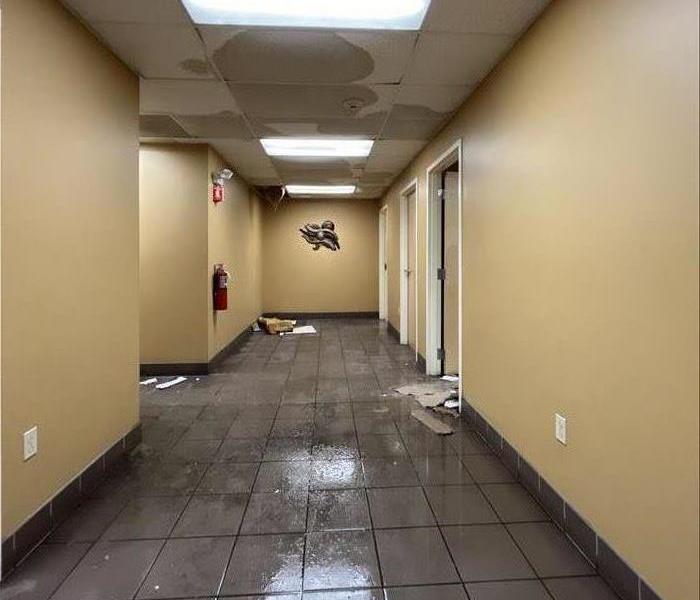How to Handle Electrical Issues After Water Damage
10/11/2024 (Permalink)
Water damage can wreak havoc on your home, especially when it comes to electrical systems. Understanding the common electrical problems that arise after water damage and knowing how to address them can help keep your home safe.
Immediate Concerns: Safety First
When your home suffers water damage, the priority should always be safety. Water and electricity are a dangerous combination. If you suspect that water has come into contact with electrical systems, avoid touching any electrical devices or outlets. Turn off the main power supply to prevent electrical shock or fire hazards. Always contact a professional electrician to inspect and repair the damage.
Common Electrical Problems After Water Damage
- Short Circuits and Ground Faults
Water is an excellent conductor of electricity, and when it enters electrical systems, it can cause short circuits and ground faults. This can lead to electrical fires or damage to appliances and devices.
How to Fix:
- Professional Inspection: Hire a licensed electrician to inspect the wiring and electrical components.
- Replace Damaged Parts: Replace any damaged outlets, switches, or wiring.
- Install GFCI Outlets: Consider installing Ground Fault Circuit Interrupter (GFCI) outlets in areas prone to moisture to prevent future issues.
2. Corrosion of Electrical Components
Moisture can cause corrosion in electrical components, leading to malfunctioning circuits and potential safety hazards. Corroded wires and connectors can impede the flow of electricity and cause overheating.
How to Fix:
- Dry and Clean: Thoroughly dry and clean the affected areas to prevent further corrosion.
- Replace Corroded Parts: Replace any corroded wires, connectors, or components to ensure safe operation.
3. Tripped Circuit Breakers
Water leaks can cause circuit breakers to trip frequently, interrupting the electrical supply to parts of your home. This is a safety mechanism to prevent electrical overloads and fires.
How to Fix:
- Reset Breakers: First, try resetting the tripped breakers.
- Identify Water Source: Address the source of the water intrusion to prevent future trips.
- Professional Help: If the problem persists, have an electrician inspect the breaker panel and replace any damaged components.
Long-Term Solutions and Prevention
- Waterproofing Electrical Systems
Prevent future water damage by waterproofing electrical systems. Seal electrical boxes, use weatherproof covers for outdoor outlets, and ensure that all wiring is properly insulated.
- Regular Maintenance and Inspections
Schedule regular maintenance and inspections of your electrical systems. This helps identify potential issues before they become significant problems.
- Elevate Electrical Systems
In flood-prone areas, consider elevating electrical systems above potential water levels. This includes raising outlets, switches, and breaker panels to reduce the risk of water damage.
Taking Action Can Protect Your Property
Water damage can lead to serious electrical problems, but understanding these issues and knowing how to fix them can protect your home and your family. Always prioritize safety and consult with professionals to handle electrical repairs. For reliable water damage restoration in Cranston, RI, trust SERVPRO of East Greenwich/Cranston/Warwick. We’re Here to Help® you restore your home and peace of mind!




 24/7 Emergency Service
24/7 Emergency Service
